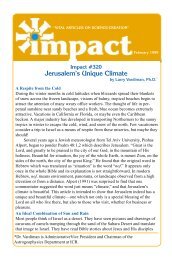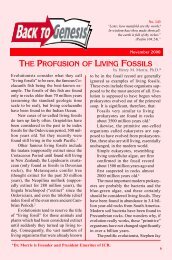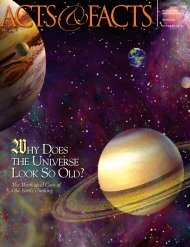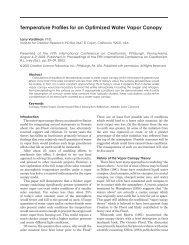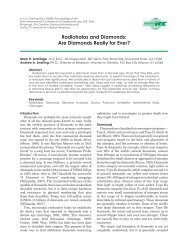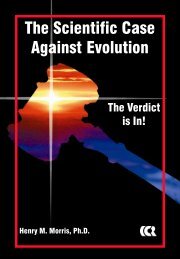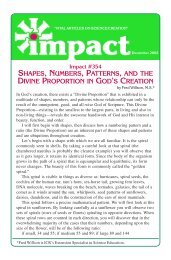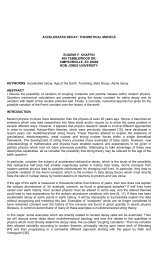Acts & Facts - Institute for Creation Research
Acts & Facts - Institute for Creation Research
Acts & Facts - Institute for Creation Research
You also want an ePaper? Increase the reach of your titles
YUMPU automatically turns print PDFs into web optimized ePapers that Google loves.
IntroductionMan-made carbon dioxide is generallythought to produce global warming.However, in a recent article entitled“Does Carbon Dioxide Drive GlobalWarming?” I presented several major reasons whycarbon dioxide is probably not the primary cause. 1But if carbon dioxide is not the cause, then whatis? Evidence is accumulating that cosmic raysassociated with fluctuations in the sun’s electromagneticfield may be what drives globalwarming. A new theory called cosmoclimatologythat proposes a natural mechanism<strong>for</strong> climate fluctuations has been developedby Henrik Svensmark, 2 Head of theCenter <strong>for</strong> Sun-Climate <strong>Research</strong> at theDanish National Space Center.Some HistoryEdward L. Maunder reportedin 1904 that the number of spots onthe sun has an 11-year cycle. 3 Sunspotscan be observed in real timeonline at www.spaceweather.com.Figure 1 shows a 400-year record ofthe monthly number of sunspots.Note the low number of sunspots inthe period from 1645 to 1715. This periodis called the Maunder Minimum 4and coincides with the Little Ice Age,the coldest period of temperature duringthe last 1,000 years.Figure 1. Monthly Solar Sunspot Number. 5For many years, climatologists attempted to correlate the numberof sunspots with various climate variables, including temperatureand precipitation. By the 1980s these attempts were determined to befutile, because the percentage change in solar heating was found to beinsufficient to explain the variations. However, this interest began to increasethe connection between cosmic rays and sunspots, carbon-14 inthe atmosphere, beryllium-10 on the surface of meteorites, and otherprocesses. In particular, it was found that carbon-14 dating needed to becorrected <strong>for</strong> fluctuations in cosmic ray flux. Without such adjustments,many carbon-14 dates were inconsistent. The question was raised, couldcosmic rays affect other geophysical phenomena as well?A New Climate TheoryIn 1995, Henrik Svensmark discovered a startling connection betweenthe cosmic ray flux from space and cloud cover. He found thatwhen the sun is more active—more sunspots, a stronger magnetic field,larger auroras, stronger solar winds, etc.—fewer cosmic rays strike theearth and cloud cover is reduced, resulting in cooler temperatures. Figure2 shows the relationship he found between low-level cloud amount derivedfrom satellite data from the International Satellite Cloud ClimatologyProject and cosmic ray counts from Climax, Colorado.Figure 2. Globalvariation in cloudamount <strong>for</strong> cloudsbelow 3.2 kilometersabove sea level (blueline) compared tothe anomaly incosmic ray counts atClimax, Colorado(red line). 6It is evident in Figure 2 that <strong>for</strong> the 12-year period from 1983 to2005, the average amount of low-level cloud follows the flux of cosmicrays very closely. In fact, Svensmark claims that the correlation coefficientis 0.92, a very high correlation <strong>for</strong> this type of data. In addition,when looking at various longer periods of record using proxy data <strong>for</strong>these two variables, he also found good correlations and similar trends.In particular, he suggested that during the Little Ice Age when the sunwas inactive, cosmic ray flux from space was high, cloud amount wasgreater, and global temperatures were cooler. As the sun became moreactive after 1750, cosmic ray flux decreased, cloud amount decreased,and global temperatures warmed. Svensmark proposed that the globalNOVEMBER 2008 • ACTS&FACTS11



